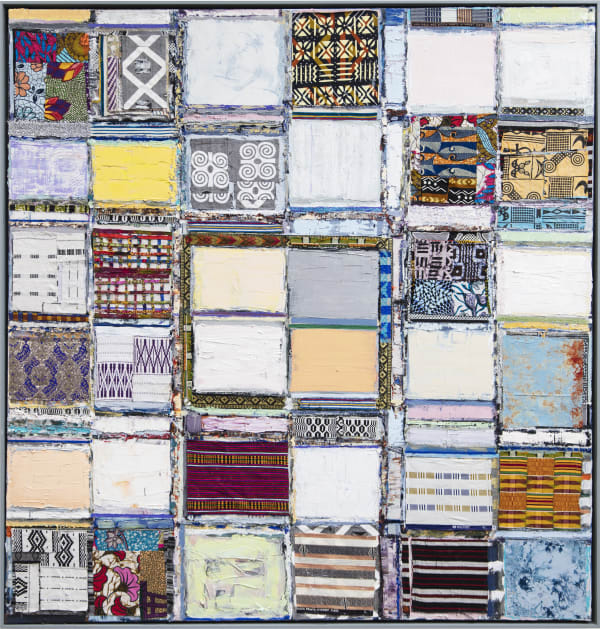Ethiopian artist Tegene Kunbi (born 1980) will open his solo exhibition today at Galleria Primo Marella in Milan, which can be visited until April 20. Kunbi, who won the Grand Prix Léopold at the Dak'Art 2022 Biennale, graduated in painting from Addis Ababa University in 2004 and taught at Kotebe University. Moving to Germany in 2008, he received a master's degree in fine arts from the Universität der Künste in Berlin, a city where he continues to reside. His work has been exhibited in Tokyo, Paris, Accra, Milan, Berlin and Nairobi.
The exhibition “Dripping Time, Fading Memory” opens today at Primo Marella Gallery in Milan where he previously exhibited in 2023 presenting “Patchwork Freedom.” When was this meeting?
Dak'Art 2022 were there to discover artists. Interested in African and sometimes Asian art, they act as a springboard for emerging talents, opening the doors of prestigious galleries to them. Italy is a hub for collectors, creating valuable connections. In addition, the Milan gallery offers excellent opportunities for growth and visibility. It has a strong leaning toward abstract art and also represents Abdoulaye Konaté, whose work explores matter, abstraction and spirituality - themes similar to the joy expressed in the works of Madagascar artist Joël Andrianomearisoa. I am grateful to be able to learn from the “big brothers,” to be enriched through their experiences. It is an intense journey and I am still on my way. Now I just have to continue calmly, step by step, to the next level, because nothing happens suddenly.
Twenty-five canvases were produced for this exhibition. Can you tell us about the production process of your work? A curiosity: do you make several paintings at the same time?
Yes, of course. Preparing an exhibition is a time-consuming process. I would not define my work as purely abstract; it is always experimentation. Every day is different - in one I work outdoors and in the next something completely new can emerge. That is why it is difficult to say when a work is really finished-everything is fluid and the oil colors need time to stabilize. I work in two ways, making different works that connect with different audiences in different countries and continents. For me it is like a palette. Looking at my videos, you see different colors: blue on one side, yellow on the other, red in another place. The color blends in my process, often with a big knife. It is an emotional expression, but also a way to make connections between the fabrics and surfaces I work with. It is not easy. You can't just mix everything. Just think of the pattern of the Kente (Ghanaian fabric made from hand-woven strips of silk and cotton, ed.): it cannot be changed completely because, after all, it looks like you. And that's what makes it interesting-it's something authentic to explore. How can I work with these elements? It's about finding connections, making craftsmanship and contemporary art dialogue.
There is much talk about African or indigenous works overcoming the Eurocentric barrier between art and craft...
Crafts are often related to necessity. Most people do it to sell, to make money and cover everyday expenses. Growing up in Africa, I saw this up close. My mother also produced it. I have always had a dialogue with this dimension, because it is relevant to so many social issues. I think of my neighbors, women with five children, schooling, daily difficulties. It is part of my experience, it affects me deeply and accompanies me, because I carry these materials with me. When I work, I know the feeling they convey, I have a connection with them as they come from my world, from my roots. They bring back memories, endless connections. And in those moments, I feel part of something bigger. I could not live (only) in Germany, for example, because for me this connection to my environment and my history is fundamental. I am fascinated by the combination of abstraction and memory. In the past I was a figurative painter, but now I'm interested in exploring new directions, figuring out what themes can emerge from this fusion.
© Laura Burocco, Il Manifesto, 20 February 2025

